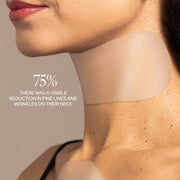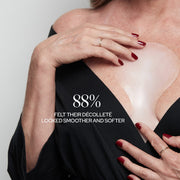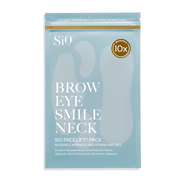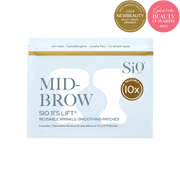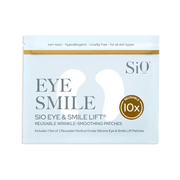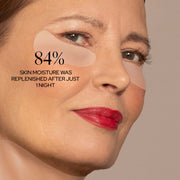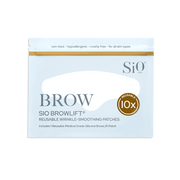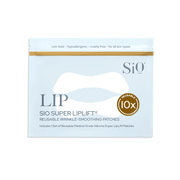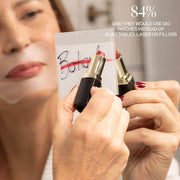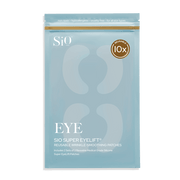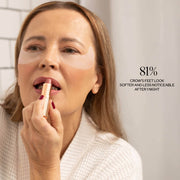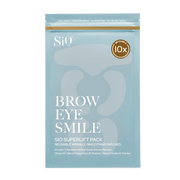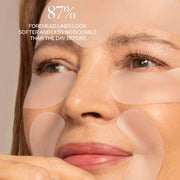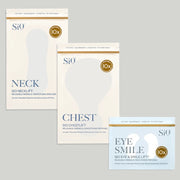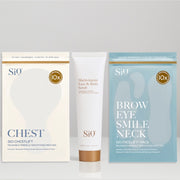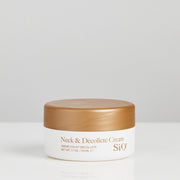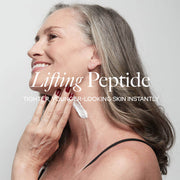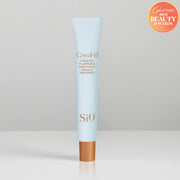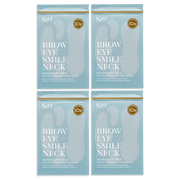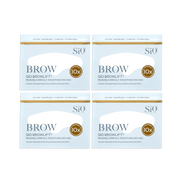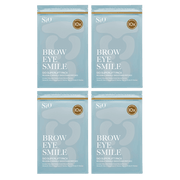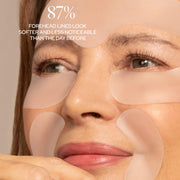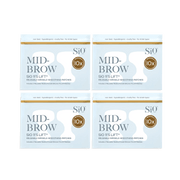Décolletage Care: Top Treatments for a Youthful Décolleté

Many women don’t think twice about spending half an hour (or longer) in front of the mirror to care for the skin on their faces. But, are you giving your décolletage the attention it deserves?
The décolletage is a decidedly feminine body part. After all, it’s revealed to some degree by most of the necklines that we see today. Unfortunately, as we age, it can also be increasingly difficult to keep smooth, soft, and youthful-looking.
The skin of the décolletage is particularly thin and delicate. So, it can lose elasticity and strength without proper care, eventually becoming discolored, crepey, and wrinkled.
Thankfully, a weathered décolletage doesn’t have to be inevitable. With just a few simple solutions, you can heal existing wrinkles while preventing new ones from forming.
So, what exactly are the best décolleté treatments? This article shares the best options out there so that you can show off smooth, sexy skin – even with the most plunging of necklines.
Décolletage vs. Décolleté
Décolletage and décolleté are familiar terms for most of us. But, it’s easy to get the two mixed up.
The décolletage is the upper part of a woman's body that’s exposed by the neckline of her clothing. Since modern fashion often features low front and rear necklines, “décolletage” includes the neck, shoulders, back, and chest.
Décolleté, on the other hand, refers specifically to the front of the neck, shoulders, and chest. In recent years, the term has been further refined to refer to a woman’s cleavage as revealed by low necklines.
What Causes Décolletage Skin Damage?
Key factors that contribute to skin damage are the natural aging process, smoking, sun exposure, moisture loss, diet, and gravity. Since the skin of your décolletage is thin and delicate, it’s one of the first areas of your body to be visibly affected by these factors.
Let’s take a closer look at each of the main causes of décolletage damage:
Aging
As we age, the collagen and elastin in the middle layers of skin begin to break down. These proteins act as a support system for the skin, keeping it firm and plump in our younger years. So, when they start to degenerate, the skin typically starts to sag inward. This results in small creases that eventually deepen and become wrinkles.
Smoking
Nicotine, whether in the form of cigarettes, e-cigarettes, cigars, or any other nicotine product, can severely damage your skin over time. This is largely because nicotine causes blood vessel constriction, which limits the flow of oxygen and essential nutrients to your skin. So, in the long run, smoking can seriously compromise your smooth, lifted skin.

Sun Damage
Sun exposure can rapidly speed up the skin aging process. The sun’s UV rays contribute to the degeneration of collagen and elastin, often making skin appear older than it truly is.
What’s more, UV rays damage the DNA within your skin cells, which may lead to skin cancer.
Diet
Your diet gives your cells (including your skin cells) the vitamins and nutrients that they need to remain healthy. So, a diet that’s lacking nutrient-dense fruits and veggies is a recipe for prematurely wrinkled skin.
Gravity
It goes without saying that we have no power over the forces of gravity. Unfortunately, it’s also a major cause of décolletage damage.
Gravity constantly pulls your skin toward the Earth. Over time, this downward pull can cause wrinkled, sagging skin.
All of this might sound discouraging, but don’t fret! There are simple steps that you can take to counteract these damaging effects and restore your décolletage’s youthful glow.
Treatment Options For an Aging Décolletage
Our favorite solutions for a smooth, supple décolletage include:
Slather On The Sunscreen.
As we mentioned above, sun exposure is one of the most significant causes of décolletage damage. Over time, it can cause a crinkly, crepey chest area with fine lines that parallel the cleavage (not to mention those pesky sunspots).
Protect yourself against these telltale signs of aging by applying a broad-spectrum sunscreen with an SPF of at least 30 at the start of each day. Even if you remain inside for most of the day, you’re not off the hook – the sun’s damaging UV rays can still reach you through the windows!
So, rain or shine, summer or winter, apply sunscreen to your décolletage, face, and any other exposed skin each morning. If you’re spending time outside, reapply every two hours for continued sun protection.
With concern surrounding the potentially harmful effects of chemical sunscreens, we’d recommend playing it safe with a mineral sunscreen containing zinc oxide or titanium dioxide.
Spread The Skincare Love.
The face is the center of attention in any skincare routine, and understandably so! But, it’s about time to include your décolletage in your daily beauty rituals. Trust us, your skin will thank you for the extra TLC.
Cleanse and Exfoliate
Warm weather clothing often leaves the neck and chest exposed. So, this area is just as susceptible to environmental stressors. Yet, many of us forget to even cleanse below the chin, let alone exfoliate!
Simply use your normal cleanser to wash away oils and debris that have accumulated on your neck and chest during the day. Next, use a gentle exfoliator to slough off dead skin cells.
We love natural exfoliators, such as a nourishing combo of ground oats, honey, and milk. But, for a simpler solution, opt for a homemade paste of one teaspoon of baking soda and two teaspoons of water. You can even use apple cider vinegar, which is an exfoliating solution all on its own.
Hydrate, Hydrate, Hydrate
Oil glands are few and far between in the décolletage. This means that it‘s highly prone to dryness and, in turn, wrinkles.
To keep signs of aging at bay, don’t forget to slather up the décolletage with a rich body oil, neck cream, or moisturizer (we‘d recommend trying out the nourishing and anti-aging SiO Cryo Body Cream, for starters). Just make sure to opt for products that are safe for sensitive skin, given that the décolletage can be prone to allergies and irritation.
Go a Step Further
As an alternative to traditional moisturizers, you can also use a hydrating silicone patch, like a SiO patch, to tackle dry, sagging skin on the neck and chest.
Décolleté patches are the latest in a series of innovations that address the wrinkled décolletage area. SiO‘s patches for the chest and neck are medical-grade silicone pads that adhere to the chest and create a moisture-intensive “microclimate“. This targeted healing environment works within just a few hours to visibly plump and smooth the skin.
Whether you wear your patches overnight or squeeze in a quick session before a night out in that low-cut LBD, you can experience a visible improvement in fine lines, wrinkles, and crepey skin. Keep in mind that if you wear the patch while you sleep, it‘ll also keep your skin from creasing, folding, and succumbing to the effects of gravity.
When you’re not wearing a silicone patch, consider applying a serum packed with active ingredients for powerful rejuvenating benefits. Alone or underneath your favorite moisturizer, a serum can give your décolletage the boost that it’s craving.
Consider In-Office Treatments.
If your budget has some wiggle room, in-office treatments from an aesthetician or plastic surgeon could help you reach your desired look.
Chemical Peels
Think of a chemical peel as an extreme form of exfoliation. It works to:
- Treat wrinkles caused by aging and sun damage
- Reduce spots, freckles, and dark patches
- Improve the look and feel of décolleté skin
During the procedure, a physician, plastic surgeon, or other trained professional applies a chemical solution to the treatment area. While the chemicals used for professional peels vary, they may include glycolic acid, trichloroacetic acid, salicylic acid, lactic acid, and carbolic acid.
Chemical peels create a controlled wound, eventually causing the top layer of skin to peel off. This reveals a new layer of brighter, smoother skin.
The possible side effects of chemical peels include redness, swelling, irritation, and temporary changes in skin color. Less commonly, chemical peels can cause permanent color changes, scarring, and infection. Given that the skin on the décolleté is quite delicate, chemical peels aren’t typically recommended for the area.
Laser Therapy
Laser therapy goes deeper than a chemical peel by stimulating collagen production within the skin. This treatment can help fade dark spots and discoloration while giving the skin a brighter, smoother appearance overall.
The type of laser used in laser therapy depends on skin type on tone. Common varieties include carbon dioxide (CO2) and neodymium-doped yttrium aluminum garnet (Nd:YAG). Be sure to talk to your physician or dermatologist to find out which option is the best for you.
Keep in mind that laser therapy tends to be expensive, may require multiple treatments, and can cause similar side effects to chemical peels, including temporary or permanent discoloration.
Ultrasound Therapy
You may be familiar with the ultrasound used during pregnancy to evaluate a baby’s growth. But, did you know that that same technology can be used to stimulate healing in the deep layers of skin?
Ultrasound therapy—ultherapy or ulthera for short—directs ultrasound waves into the skin, where they safely heat the targeted tissue. In response, the body naturally starts to produce more collagen, leading to a tighter, smoother appearance of the skin over time.
Though ultrasound therapy is an effective way to treat wrinkled skin in the décolleté area, some patients have reported the procedure to be painful. Plus, it can be expensive and may require multiple treatments.
Micro Fat Grafting
The primary reason for wrinkles forming on the décolleté is the loss of collagen and elastin in the skin. Micro fat grafting is one effective way to fill the empty space left behind by lost collagen and elastin.
During micro fat grafting, fat is removed from another area of your body, such as the abdomen, hips, or thighs. It’s then processed and injected into the skin of the décolleté. The fat refills the empty space within the lower levels of the skin, while simultaneously smoothing and plumping the surface layers.
Since micro fat grafting uses fat from your own body, there’s a relatively low risk of side effects. However, there is a significant risk of overfilling, which can cause an irregular or bumpy appearance. Additionally, as is the case with many professional treatments, micro fat grafting can be expensive and may require several sessions.
Vampire Facelift
Yes, we’re serious – the “vampire” facelift has become all the rage in the world of skin rejuvenation. Also known as a platelet-rich plasma or PRP facial, this treatment uses the patient’s own blood to smooth out wrinkles, including those on the décolleté.
The procedure starts with a blood draw. That blood is then processed to isolate the natural growth factors, which are injected into the targeted area. In time, those growth factors will stimulate collagen and elastin production, resulting in a tighter, smoother décolleté.
Like micro fat grafting, the “vampire facelift” uses autologous material (meaning that it’s taken from the patient), so it involves fewer risks than other procedures. But, also like micro fat grafting, it can cost thousands of dollars and require multiple visits to the doctor.
Injections
Injections are among the most popular in-office cosmetic treatments for wrinkled, aging skin. The most common injections include Botox™ and hyaluronic acid fillers.
Hyaluronic acid fillers are designed to fill the space left behind by lost collagen and elastin. Botox™, on the other hand, prevents the facial muscle contractions that contribute to wrinkles and facial creases.
While Botox™ is extremely popular for wrinkles and fine lines on the face, it’s not generally used for the décolletage –hyaluronic acid fillers are a better option. But, since the skin of the décolletage is thin and delicate, many aestheticians and dermatologists don’t recommend injections of any kind for this area.
Fuel Your Body With Wrinkle-Fighting Superfoods.
The substances that enter your body, whether through your skincare products or your diet, play a key role in the skin aging process. So, with a balanced, hydrating, and nutrient-rich diet, you can effectively battle dry, wrinkled skin.
We suggest incorporating a few natural wrinkle-fighting superfoods, such as kiwi, avocado, and almonds. Then, kick the healing into high gear with plenty of vibrant vegetables, fruits, lean protein, and whole grains. For the best possible results, keep refined sugars and fatty foods to a minimum.
After incorporating these tips into your regular diet, you can sit back, relax, and let your skin repair itself from the inside out.
Quench Your Skin With Daily Hydration.
Dehydration can take a toll on several different aspects of your health, including your skin. Parched, irritated, and even itchy skin are common signs of dehydration and can leave your décolletage looking less than its best. We recommend sticking to the expert’s rule of thumb: drink at least eight eight-ounce glasses of water each day to keep your body optimally hydrated.
While we’re on the topic of dehydration, let’s briefly talk about alcohol. We love a glass of wine to unwind at the end of a long day as much as the next gal. But, for the sake of your décolletage, it’s wise to keep those adult beverages in moderation. Excess alcohol dehydrates the body and even causes a spike in free radical activity. Over time, this can be a serious detriment to your skin.
We’re not saying to ditch happy hour altogether – just keep an eye on your alcohol consumption and try to limit it as much as possible. Plus, when you’re done with the libations for the evening, load up on water to rehydrate your cells.
Don’t Skimp on Beauty Sleep.
Remember earlier when we mentioned that good sleep contributes to healthy, beautiful skin? It’s true. While you sleep, your skin has a chance to heal and rebuild itself. So, no matter how binge-worthy your latest show is, make sure to get the recommended seven to nine hours of sleep every night.
In addition to the number of hours that you sleep, your sleeping position can play a role in the development of wrinkles on the décolletage area. The side-sleeping position causes women’s breasts to fall downward, which creases the skin in the cleavage area. That’s why we love SiO Beauty patches’ ability to keep the skin taught and smooth, no matter your sleeping position.
Rethink Your Shower Routine.
When was the last time you switched up your bathing routine? Considering that this self-care ritual can affect the health and appearance of your skin, it’s worth a second look.
Before you even hop into the shower, squeeze in a solid dry brushing session. If you’re not already familiar with this ancient ritual, dry brushing is known to benefit the skin by stimulating circulation, clearing pores, balancing fat distribution, toning muscles, and removing dead skin cells. This practice also encourages your oil glands to produce oil, which helps smooth skin’s texture while enhancing elasticity.
Another aspect of your shower to note? Soap can be highly alkaline and strip the skin of its natural oils. So, select your body soap carefully. For the best possible result, try using your facial cleanser for the décolletage, as it’s less likely to dry out and disrupt the skin barrier. While you’re at it, try showering in warm – not hot – water to prevent dehydration and irritation.
Last but not least, when you step out of the shower, make sure to dab your skin dry with a towel instead of rubbing, which can inflame the skin and even damage capillaries. But, if you have the time (and patience), air-drying the skin is best!
Conclusion
You don’t have to go to extremes to achieve a smooth, youthful-looking décolletage. Simple additions to your existing self-care routine will go a long way toward rejuvenating this crucial area of skin. Ultimately, a good sunscreen, gentle cleanser, rich moisturizer, and a SiO patch at night are just about all you need to visibly rejuvenate the neck and chest.




